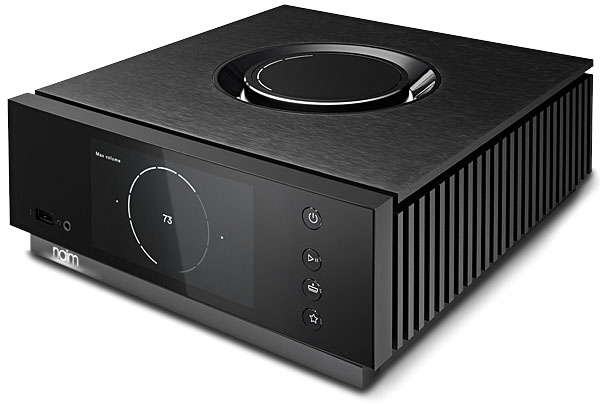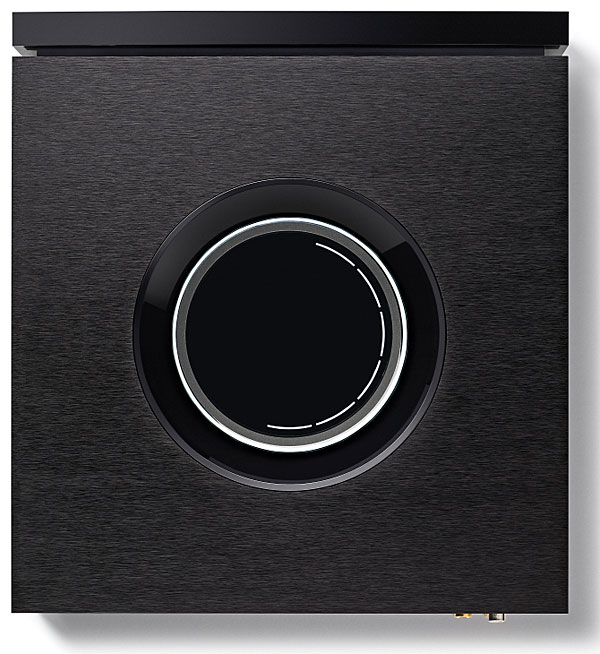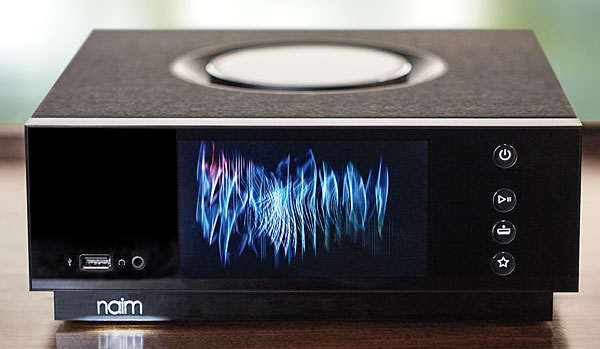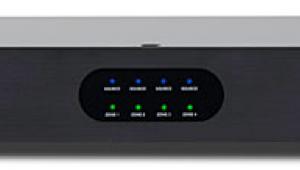You can buy a decent laptop and DAC, save $2g
Naim Uniti Atom Wireless Music Player Review Page 2

The Ergonomic Side
For any new-age component
like the Uniti Atom, the hands-
on experience is probably as important to real-world potential customers as the sonic one. There’s a lot going on in a design like the Atom, so how Naim handles the user interface is key. The front panel has a quartet
of hardware buttons beside the razor-sharp screen (which, though it seems like it should be a touchscreen, isn’t one); in addition to power, play/pause, and input (step-through), there’s
a Favourites button that calls up a list of internet streams. The most obvious hardware control, though, is the ginormous, illuminated volume knob set into
the top panel. This is undeniably cool, but it means that stacking something like a USB hard drive (or a pile of CDs) on top is a nonstarter.
Naim supplies a very sexy, motion-activated, illuminated remote control that duplicates these commands and adds a few more, such as skip, mute, and (display) brightness. Naim bills this as a two-way remote, but the only real reverse info is a duplication of the top-panel knob’s volume-level indicator, a curved-dashes circle that lights up and grows or shrinks in length as volume changes. This is situated around the remote’s five-way navigation key set.

The interface I imagine the majority of users will end up employing most of the time—I did, anyway—is the Naim app (iOS or Android). Having loaded this to my iPhone 6 in response to front-panel prompts during the Atom’s setup routine, I found it to be almost entirely intuitive, with intelligent layout choices and clean, well-organized graphics and screens. That said, I still had a couple of peeves. A larger typeface for track and title listings would have been welcome. (Although there’s a broad selection of wallpaper themes available, I could find no way to modify this default.) And the volume slider found at the bottom of the screen was sometimes a bit slow and lumpy in its response. Nor could my phone’s up/down volume buttons be designated to activate it; for smooth, instant volume adjustment, I needed the Naim remote control.
Odds, Ends, and the End
The Atom’s front-panel headphone output—a ⅛-inch stereo minijack—serves up fine listening. I tried a trio
of headphones from NAD, HiFiMan, and Sony and had ample level and copious sonic finesse from all of them (though the hardest-to-drive HiFiMan Edition X needed most
of the Atom’s volume-control range to reach concert-like levels on wide-dynamic-range material). A bit surprisingly, I found no way to select net-library streaming from the front panel, where one might find oneself for headphone listening; doing so requires either the remote control
or the app. The Atom is expandable to an outboard power amp via its RCA-jack line outs, or, I suppose,
a subwoofer, though without bass management. There’s a ground-
lift switch on the back panel to
break any ground loops, but my Atom setup remained dead silent
in either position.

In sum, I loved almost everything about Naim’s Uniti Atom stream-plifier—everything, that is, except the price. Which is not to say that $3,000 is unfair for so beautifully conceived, engineered, and executed a product; if the Atom were only a passive piece of sculpture that did nothing but light up alluringly and look high-tech, you could doubtless find plenty of well-heeled folk to buy it without hesitation. It’s just that plenty of brands—NAD and Yamaha spring to mind, for two—will sell you less elegant but similar functionality, less intuitive but similar integration, and less refined but similar performance for a great deal less.
Similar, but not identical. And similar is not identical, especially in the case of this—or, for that matter, any—Naim product. If you value originality as much as quality and performance, the Uniti Atom just may seem a bargain.
- Log in or register to post comments

Want to experience the thrill of one of Canada's best online casinos? Camrose Casino is a place where everyone can find something to their liking. Hundreds of slots from leading providers, exciting card games, roulette and a live casino with professional dealers await you here. Enjoy bonuses and receive exclusive offers. Register now and dive into the world of real gambling.






























































